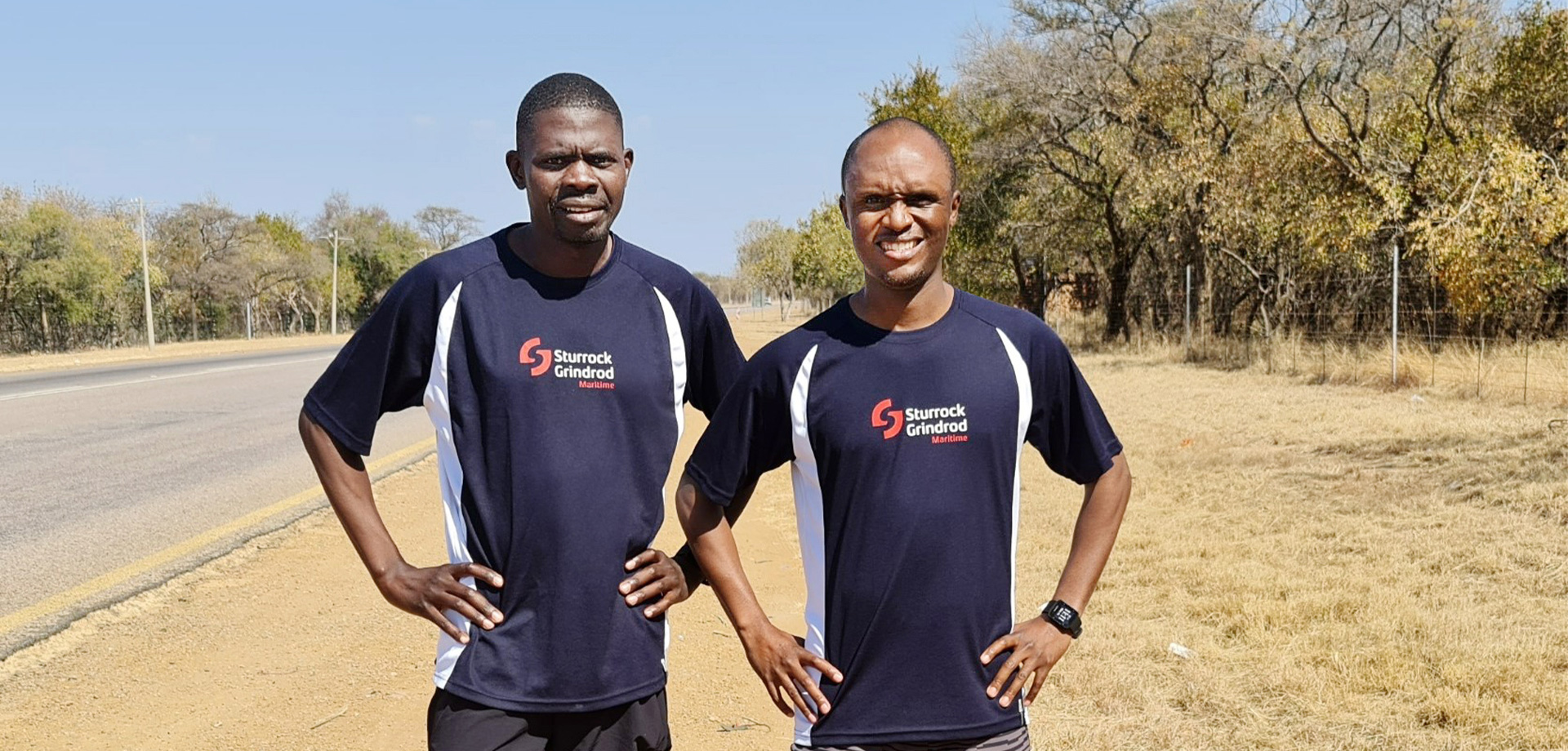Sturrock Grindrod Maritime (SGM) recently celebrated the success of two runners, Solly Malatsi and Makashule Gana, who completed a 523 km run from Soweto to Tzaneen in 16 days. This mammoth fundraising initiative called Home Run for Education raised R500 000. SGM donated R35 000 towards this worthy cause.
The funds will be donated to primary and secondary schools in Lefara, Moduane, and surrounding villages to assist poor households with school uniforms, stationery, and sanitary pads for school-going children. Many residents in this impoverished area rely on social grants to make ends meet, and employment opportunities are scarce. This makes it difficult to invest in children’s education, leading to further risk of future unemployment.
After most social running events were cancelled due to the COVID-19 pandemic, virtual runs were introduced across the country. Malatsi found they weren’t as fulfilling and decided he wanted to pair the physical challenge of running with a worthy cause that could have a long-term impact on society. With both runners originating from rural areas, they had experienced and seen first-hand the struggles their community went through by not having access to school uniforms, school shoes, and learning material. Malatsi then proposed the idea for Home Run for Education to his friend Gana who enthusiastically accepted.
HR Director for SGM, Nicola Truter, who oversees SGM’s corporate social investment initiatives, said, “SGM invests a lot in education-driven programmes and in the past year we have provided learnerships for disabled people, bursaries for maritime/engineering students and supported South African charities that stimulate young minds. Home Run for Education spoke to supporting a cause whereby two remarkable runners were willing to put in the hard yards for a bigger purpose. This really appealed to us as an organisation and we applaud them for their tenacity and resolve during their ambitious run. What they have achieved is no mean feat.”
Initially earmarked to start in July, the date was delayed due to lockdown level adjustments, but the pair officially started on the 7th and finished on 22nd August 2021. On average, they ran a distance of 35km per day, with the furthest distance covered in a day being 39km. They ran for six consecutive days and then had one resting day in between. They were quite diligent in tracking the racing distance and the finish point on one day became the starting point for the next to make sure the correct distance was covered.
SGM was approached for sponsorship by Home Run for Education and was one of the first companies to pledge a commitment to the run. Malatsi said, “We are so grateful to SGM for supporting us and certainly don’t take it for granted. I was surprised that a Cape Town-based company would take an interest in an initiative for rural Limpopo, but this shows the caring nature of the company. We were well supported by Andrew Sturrock, CEO of SGM and the SGM staff.”
Malatsi said, “Every ache and pain along this journey was worth it. This cause was so much bigger than us and we wanted to make a positive impact in the communities in which we grew up. This experience was extremely challenging and humbling and what surprised us most was the solidarity of the running community as well as the overwhelming generosity of strangers who crossed our path.” The pair would often find last-minute accommodation for the night and once the owners heard their story, they would waive their accommodation costs. This enabled them to not dip into the Home Run funds and could ensure they save as much money as possible.
Malatsi and Gana received overwhelming support from the running clubs and the communities, with many running alongside them in solidarity. They also had one crew member following them with a support vehicle in case they required any assistance along the route. They intend to do a return leg from Tzaneen to Soweto in two years. This should allow them enough planning time to apply lessons learnt from this run and give their sponsors time to budget for the event.

